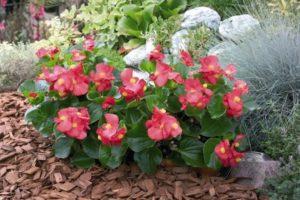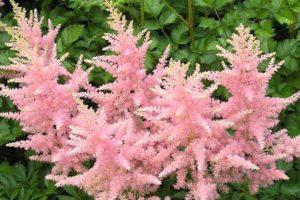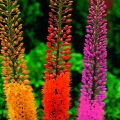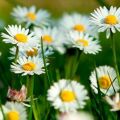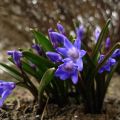Planting and caring for a cornfield in the open field, description of species and srt
An indispensable element in landscape design is the daisy, which will gain popularity due to its long flowering and interesting shrub shape. Many gardeners love culture for its simplicity, elegance and harmony with the rest of the plants in the garden when composing. If you want to decorate the site with a nivyan, you must first carefully study all the nuances of planting and the subtleties of caring for a perennial.
Description and features
Nivyanik, the official name of which is leucanthemum, of the Asteraceae family. In the wild, it can be found in temperate areas. It is actively used in landscaping, landscape design.
Typical features are the height of the cornflower, which is up to 60 cm. The root system is superficial, the stem is erect. Lanceolate-oblong and rich green leaves are located along the stem or at the roots. Inflorescences are a scutellum with a hemispherical shape, its diameter ranges from 2.5 to 12 cm. The flowers are concentrated in the center, have a yellow color and are called tubular, and the ligulate flowers are at the edges and have a white tint.
The flowering process is repeated twice in one season. The first one can be admired in May, and it lasts until July, then the plants bloom again in August and delight until September.
Nivyanik can be both perennial and annual. In all species, the fruit is a box with seeds located on one side. The seeds germinate from 2 to 3 years.
Growing seedlings
In floriculture, when breeding a daisy, growing seedlings gives excellent results. The superiority of this fascinating process is that these plants bloom earlier than those sown directly to the flowerbed, and for a long time delight with their luxurious flowers.
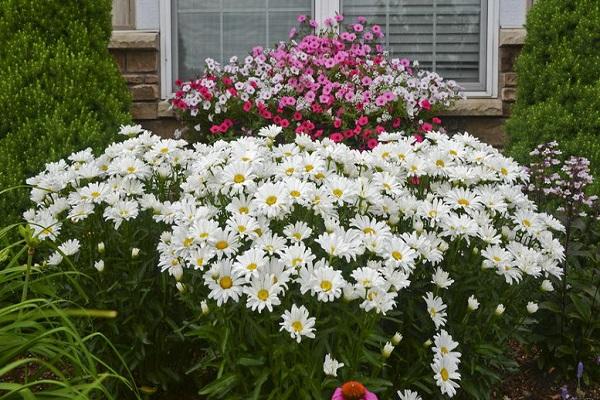
Timing
Planting seeds for seedlings is carried out in the last decade of February or at the beginning of March.
Soil preparation
To plant daisy seeds, you need to purchase special soil from a flower shop.You can also make your own soil mixture based on sand, peat.
How to plant
Sowing includes the following actions:
- Sterilize the soil and dishes before sowing using a solution of potassium permanganate.
- Put a drainage layer on the bottom of the container, then pour the potting soil, leaving the dishes 3 cm empty from the edge.
- After leveling the surface, distribute the seeds, deepening them by 1 cm, lightly sprinkle with soil on top.
- Spray with water at room temperature using a spray bottle.
- Cover with glass, film material.
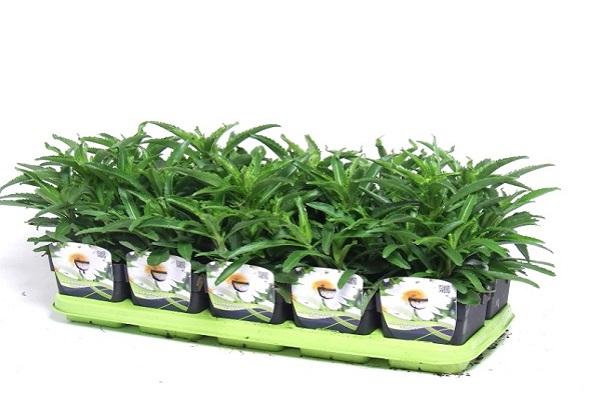
Temperature and light conditions
For successful germination of seedlings, it is recommended to maintain a room temperature of 22 degrees, the light should be diffused. Care at this point consists in daily airing the greenhouse and moistening the soil as it dries. Seedlings will not be long in coming and will appear after 7-14 days, the shelter must be immediately removed and already grown, organizing a temperature of 17-20 degrees and the same lighting.
Fertilizer
When seedlings are formed when watering seedlings, use a non-concentrated solution of complex fertilizer instead of water.
Picking
When the sprouts form 3 true leaves, dive, planting the seedlings in individual containers. As a soil, take a mixture based on substances such as peat, sand and humus. Install the containers in a bright place and conduct moderate watering.
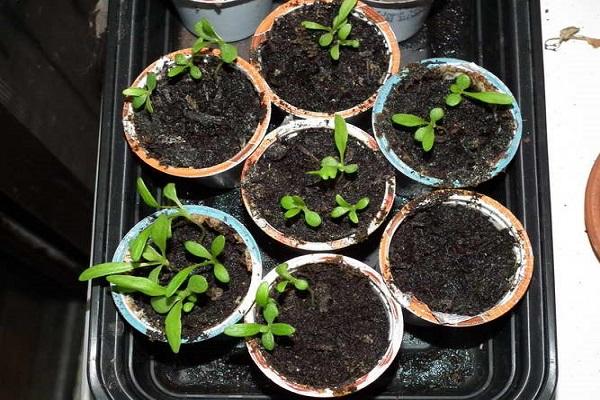
Top dressing
After picking, the sprouts need to be fed with a solution based on organic fertilizer. The procedure is carried out twice with a time interval of 3-4 weeks.
Landing in open ground
Adhering to certain rules for planting a daisy in the garden, you can grow flowering bushes of unique beauty.
Timing
In May, as soon as the threat of frost at night passes, plant the seedlings in open soil.
Site selection
An ideal place for cultivating cornflower is an open, illuminated area. It should be borne in mind that from a lack of light, the shoots are stretched, bent, and few flowers are formed.
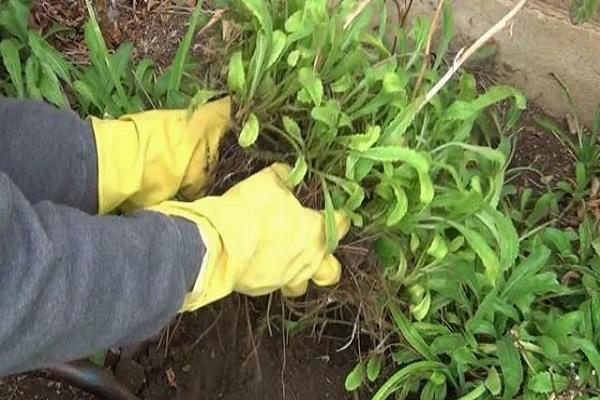
Soil requirements
Nivyanik prefers fertile moist soil, which is friable and contains peat, sand, humus in equal parts.
The plant does not tolerate heavy clay soils and lowland areas.
Landing scheme
Algorithm of actions for planting seedlings on a flower bed:
- Dig holes 25-30 cm deep, keeping a distance between the planting units of at least 30 cm.
- Fill the bottom of the pit with drainage, which will serve as sand, broken brick or heat-insulating expanded clay granules. Sprinkle with soil mixture on top.
- Plant the seedlings in the prepared holes. When planting, cover the sprouts with loose, lump-free soil, while keeping them strictly vertical.
- Seal the soil and water it with warm water.
When the seedlings are planted, begin the conservation phase and create good conditions for the plants to develop.

Care
Observing the simple rules for caring for the plant, you can get strong and abundantly flowering daisy bushes, which will decorate with their magnificent views any site, the local area. To do this, attention should be paid to watering, loosening the soil, top dressing, and also to fight the main diseases and dangerous pests.
Watering
Nivyanik demonstrates drought tolerance. Watering is required for perennials to form exquisite flowers and normal growth and development. It is important to avoid stagnant water during the procedure, as this will provoke the occurrence of fungal diseases and rotting of the roots. Deficiency of moisture can provoke wilting of flowers and aging of bushes.
After watering, it is recommended to mulch the soil using sawdust, straw.
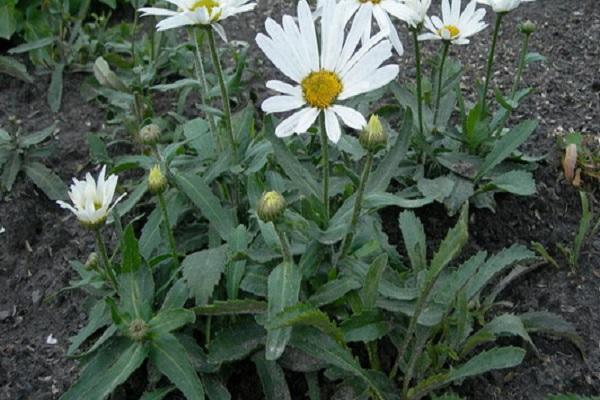
Loosening and weeding
Loosening of the soil is an important measure for caring for the udder, as it helps to reduce the evaporation of internal moisture, as well as the free flow of oxygen to the root system. This procedure will produce strong plants with large and vibrant flowers.
Weeding is also a must, as it gets rid of weeds that draw moisture and nutrients from the soil to keep flowers growing.
Pruning
To maintain the beauty of the plantings, you need to cut off the wilted flowers at the time of flowering, if you do not plan to collect seeds. At the end of flowering, to maintain the decorative effect of the bushes, they must be cut to a height of 15 cm from the ground. In the autumn, cut the plants to the ground so that in spring young shoots grow without obstacles, and dry stems do not spoil the beauty of the plantings.
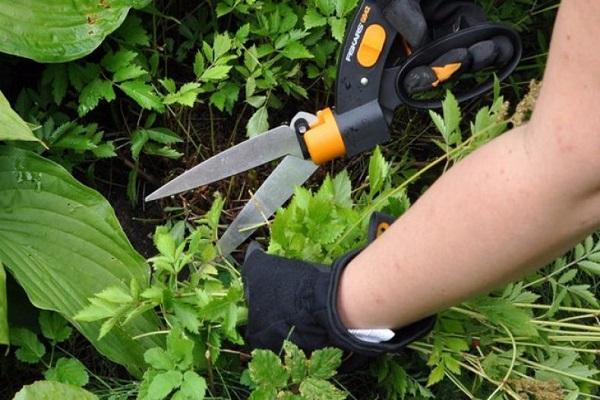
Top dressing
Perennial crops are responsive to feeding, it is important to observe the dose when fertilizing. Feed the daisy twice a month, alternating organic matter with mineral elements.
Preparing for winter
The daisy from among winter-hardy plants is able to withstand a decrease in temperature indicators to -20 degrees. But for the purpose of prevention, it is better to cover the daisy with foliage or coniferous spruce branches for the winter. In the spring, remove the cover so that the bushes do not vomit.
Diseases and pests
The cornflower can infect diseases and attack pests, especially in damp, cool weather.
Rust
Fungal disease, which is manifested by reddish and brownish powdery pustules on the underside of the leaves and on the stems. Infected bushes need to be removed from the flower bed, rust is poorly treated.
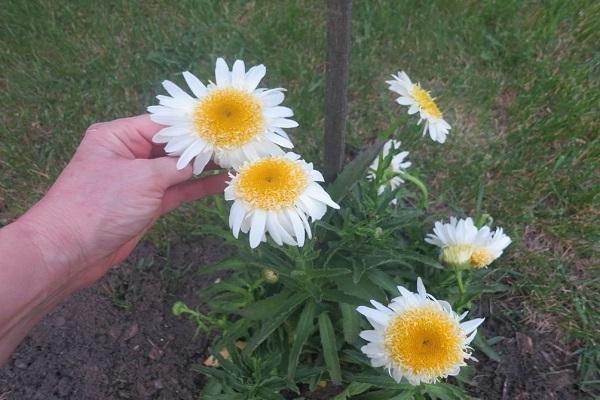
Powdery mildew
The disease can affect not all varieties of the daisy. Its appearance is signaled by a white bloom on the lower foliage. At the first symptoms, spray with Bordeaux mixture.
Peronosporosis
The signal of peronosporosis is the formation of light yellow oily specks on the leaves, which increase over time, merge, this leads to the drying of the leaf plate. Severely affected bushes that have lost their decorative effect must be destroyed.
Spotting
The presence of spots of various shapes, colors and sizes on the foliage and stems of the daisy indicates the appearance of spotting. As a result, the disease leads to the death of the entire plant. Fallen and affected foliage must be removed. At the first symptoms, treat the bushes with any preparation containing copper.
Fusarium
In sick young daisy bushes, the foliage turns pale, wilts and dries up. In adults, at the initial stage, yellowing of the lower leaves occurs, then the whole plant. The appearance of the first signs requires the prompt elimination of infected plants.
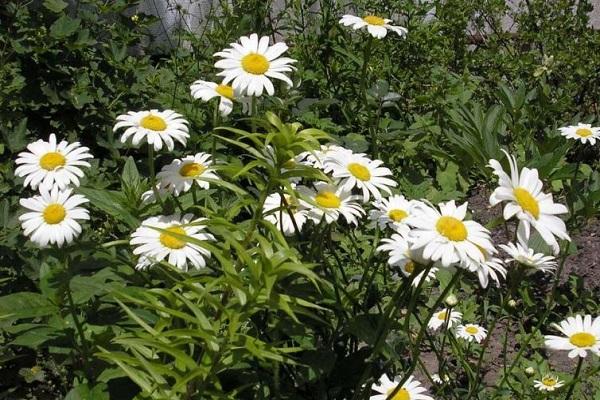
Stem base rot
The cornflower wilts, its roots, the root collar rot. The disease is concentrated at the base and over time spreads up the stem, the foliage in the lower part turns brown. Control measures are to destroy the infected bushes and treat the rest with systemic fungicides.
Bacterial cancer
White growths appear on the roots, the root collar of the daisy, which subsequently darken and decompose. They lead to a slowdown in the growth of the plant with its subsequent death. Infected specimens must be removed from the garden, and the holes must be treated with bleach.
Slobbering pennies
Large sucking insect 10 mm long, yellow-brown in color. Its larvae feed on the sap of plant tissues, enveloping the leaf petioles and stem with frothy saliva. As a result, damaged parts are deformed and dry out. Control measures include the collection and destruction of larvae, as well as the treatment of the daisy bushes with special chemicals diluted in accordance with the attached instructions.
Thrips
Thrips are considered dangerous for the daisy. They settle on inflorescences, from which the splendor of the white petals and yellow hearts is extinguished. Treatment with an insecticidal solution is considered an effective tool against insects.
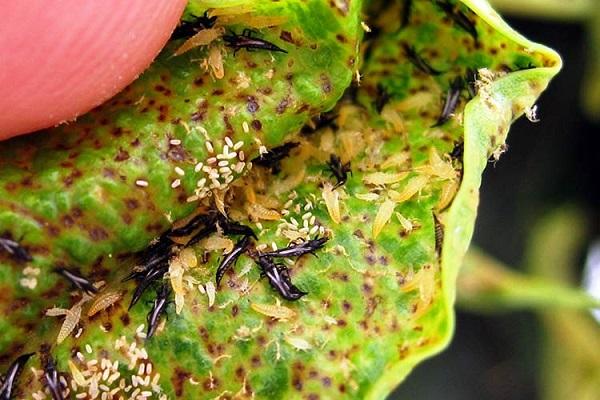
Chrysanthemum miners
Chrysanthemum miners, gnawing winding passages inside the leaves, have also chosen the foliage of the daisy. Only treatment with the use of insecticides will help get rid of them.
Kinds
The simplicity and elegance of the nivyannik fascinates and does not leave indifferent flower growers, who, in order to give the site a unique look, prefer the following varieties of culture.
Swamp
Bushy undersized daisy 25-30 cm high with thin stems and green foliage with uneven edges. It blooms in the last decade of June with white inflorescences 3 cm in diameter.
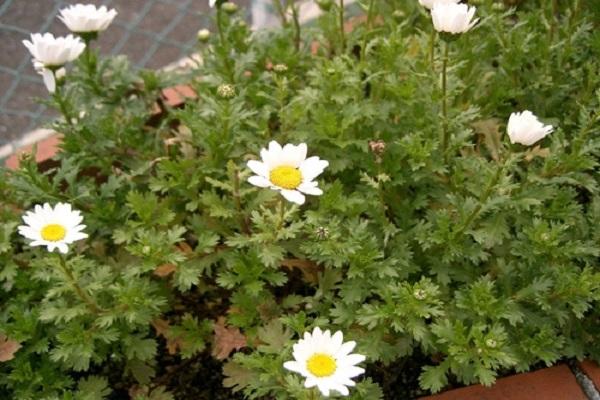
Kuril
The perennial is characterized by a powerful rhizome, its height is up to 20 cm. The bushes of the cornflower have dissected foliage and thin stems, on which single baskets up to 8 cm in diameter are formed. Attention is drawn to the white flowers of the daisy with a yellow tubular center, pleasing with their beauty later than other varieties.
The greatest
This type of daisy can reach a height of up to 1 m. It is valued for large simple and double flowers, the diameter of which is 12 cm. Late flowering is considered a feature of the variety: from the beginning of July.
Ordinary
A plant that has a straight, non-branched stem, growing up to 90 cm. The bush has a powerful rhizome, from which lateral shoots grow, therefore, an ordinary daisy can have a diameter of up to 30 cm. The leaves are green, oval, and have teeth along the edge. The daisy species is popular for its flowers, characterized by a yellow center up to 5 cm in diameter, surrounded by long white petals in the form of rays. Blooms in May and late autumn.
Terry
A beautiful flower 60-70 cm high with tall thin dark green stems, glossy large leaves and flowers consisting of many white petals and a yellow center. The daisy blooms in June-July.

Large
A cornflower with straight stems and large flowers with wide white petals and a yellow center. Abundant flowering in June-July.
Popular varieties
The varietal variety of the daisy is represented by many hybrids.
Alaska
The variety shows resistance to frost, therefore it is popular in regions with cold climates. The cornflower has a slightly pubescent, strong stem, narrow, shiny, dark green foliage and large white flowers up to 10 cm in diameter.
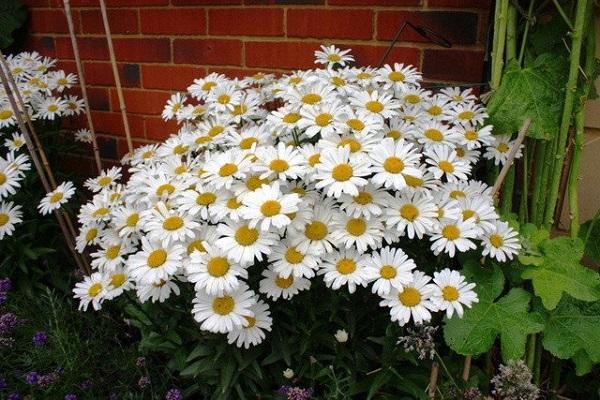
Beethoven
The plant is 60 cm tall and has erect stems that are heavily leafy at the bottom. Baskets up to 8 cm in diameter, single, apical. Marginal ligulate flowers of white color, oblong, finely toothed at the top. Bloom is observed in July.
Christine Hagemann
A garden favorite with anemic inflorescences 8-10 cm in diameter. The marginal ligulate flowers of the daisy are long, white, behind them is a ring containing short, swirling white petals that completely cover the yellow middle. Flowering begins in July.
Little Princesses
A low-growing perennial with a height of 15 to 20 cm. It attracts attention with its large bright white flowers 6-7 cm in diameter. It blooms in July-August.
Lady Snow
A compact bush 25-30 cm high, 40 cm in diameter. Against the background of low shoots, the inflorescences seem large, although their diameter does not exceed 7 cm. The daisy has green foliage and white flowers up to 4 cm in size. It blooms in mid-summer.
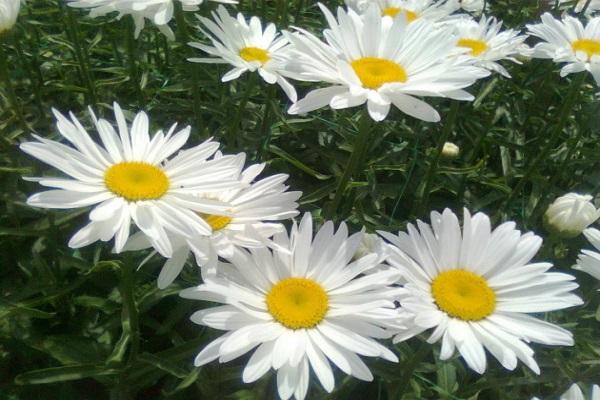
Stern von Antwerp
Nivyanik belongs to tall varieties, has inflorescences up to 10 cm in diameter. Reed flowers in baskets are white, tubular ones are yellow.
Maxima Koenig
A perennial can grow up to 1 m. It has baskets up to 12 cm in diameter, containing 1-2 rows of white reed flowers and dark yellow median tubular flowers. Fascinates with the beauty of flowers in June.
May Queen
A popular variety of cornflower up to 50 cm high.It is valued for its bright green foliage that surrounds the stems and forms an impenetrable carpet under the large flowers, with a slightly convex yellow center, which is framed by wide white petals. Pleases with flowering in early summer.
Sanssouci
A beautiful cornflower up to 1 m high. The bush is decorated with inflorescences with a diameter of 12 cm, containing yellow median and white ligulate flowers placed in 6-8 rows, up to 5 cm long. It blooms in the last decade of May.
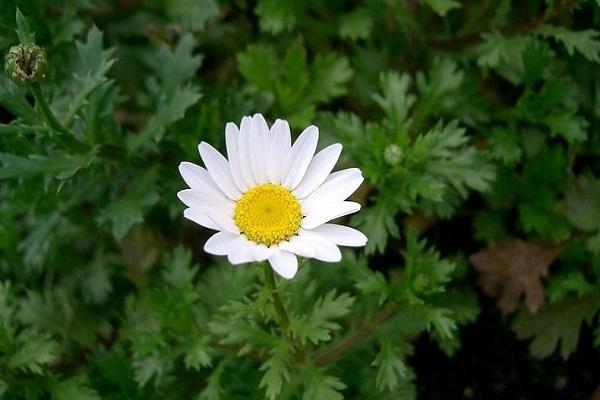
How to prolong flowering
In order to admire the luxurious flowers of the plant again during the season, it is necessary, provided that the collection of seeds is not planned, to cut off the wilted flower stalks. This procedure will preserve the strength of the plant and incline it to secondary flowering at the end of August, in autumn.
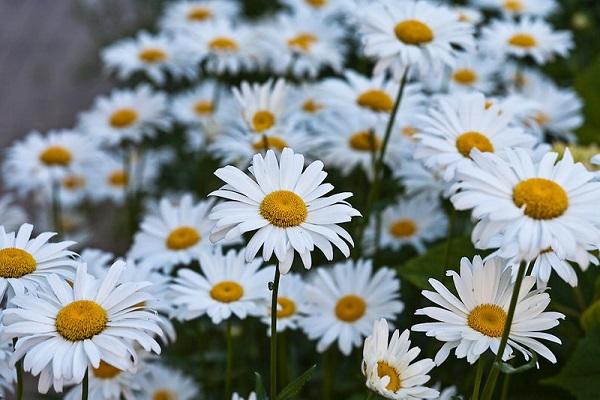
Collection and storage of seeds
August is the time for collecting the seeds of the daisy. To do this, select healthy bushes in advance and leave large peduncles on them. When the petals are dry and the baskets become brown, cut off the seed pods and send them to a warm, well-ventilated place for drying. Then take the seeds of the cornflower out of the baskets and put them in a bag made of paper, which must have holes to provide air access to the seed.
Store in a dark place at room temperature.
Having studied the information about a non-capricious, luxurious nivyanik and convinced of the simplicity of growing a flower from seeds, novice gardeners will definitely be eager to decorate their site with it.
